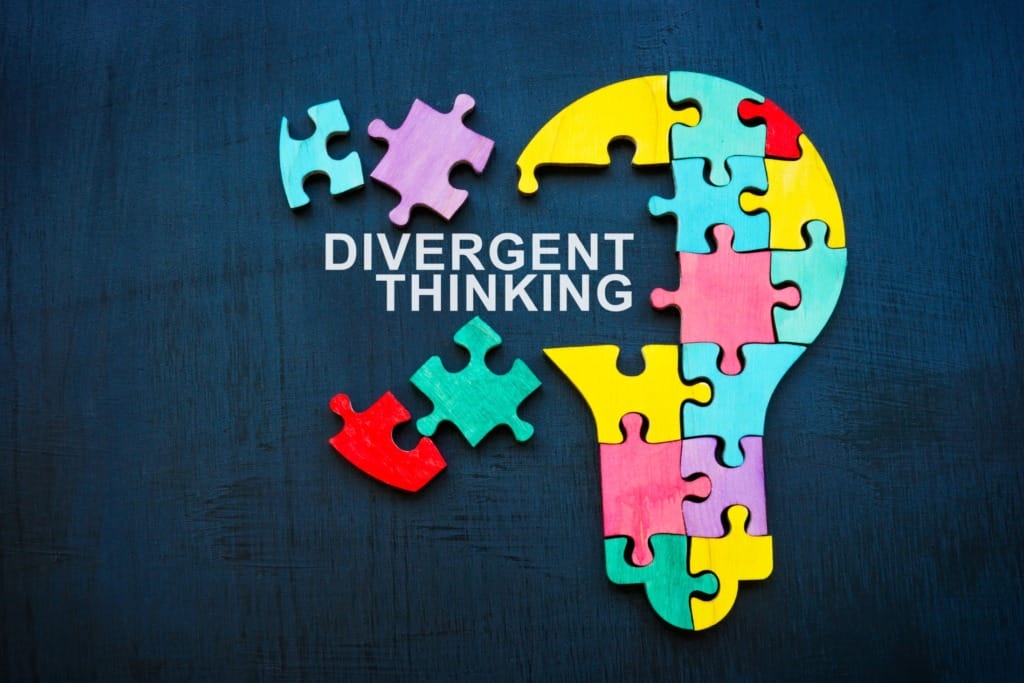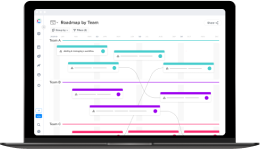Home > Blog > Divergent Thinking: Definition, Meaning, and Its Role in Product Management
Divergent Thinking: Definition, Meaning, and Its Role in Product Management

Divergent thinking is a core capability for creative problem-solving and innovation, especially in product management, where generating a broad spectrum of solutions is vital for staying ahead and delivering real value. By understanding what divergent thinking means, and how to leverage it, product teams can transform how they approach challenges, make decisions, and build products that matter.
What is Divergent Thinking? Definition and Meaning
Divergent thinking is the process of generating a variety of unique ideas or solutions in response to a single challenge. Unlike traditional, step-by-step problem-solving, divergent thinking is open-ended and non-linear, encouraging teams to explore a wide landscape of possibilities without prematurely judging their feasibility. This mindset, often called “thinking outside the box” is essential for driving innovation and adaptability in fast-paced environments.
Divergent Intelligence and Product Management
Divergent intelligence, the ability to think creatively and generate multiple solutions, plays a crucial role in successful product management. Product managers who harness this skill are better equipped to spot new market opportunities that others may overlook, design innovative features that stand out in crowded markets, and adapt quickly to changing customer needs by exploring alternative approaches.
By fostering a culture of creativity within their teams, they encourage experimentation, learning from failure, and moving beyond “feature factory” thinking to focus on solving real user problems rather than simply shipping outputs. Divergent thinkers also build stronger alignment across silos by integrating diverse perspectives from distributed and cross-functional teams, ultimately driving more meaningful and impactful product outcomes.
Benefits and Risks of Divergent Thinking in Product Management
Divergent thinking unlocks creativity and helps teams uncover opportunities that linear approaches often miss. For product managers, the benefits are clear: it enables faster adaptation to changing markets, sparks innovation that resonates with users, and strengthens collaboration by integrating diverse viewpoints.
At the same time, divergent thinking comes with its challenges. Generating too many ideas without structure can lead to idea overload, making it difficult to decide what to pursue. Teams may also experience misalignment if there’s no clear framework to capture and evaluate contributions. The key is recognizing these risks and pairing divergent thinking with facilitation techniques, prioritization methods, and time-boxed exploration so creativity remains productive rather than overwhelming.
Practical Techniques to Encourage Divergent Thinking
Product teams can actively nurture divergent thinking with structured methods designed to spark creativity:
- Brainwriting: Instead of open discussion, each team member writes down ideas individually, which are then shared and built upon. This prevents dominant voices from shaping the conversation too early.
- SCAMPER Method: A creative framework that challenges teams to Substitute, Combine, Adapt, Modify, Put to another use, Eliminate, or Reverse aspects of an idea or feature.
- Mind Mapping: Visualizing connections between ideas often uncovers unexpected solutions and relationships.
- Crazy 8s: A design sprint exercise where participants sketch eight variations of a solution in eight minutes, encouraging rapid exploration without overthinking.
These methods not only generate a wide pool of ideas but also create an inclusive environment where creativity is distributed across the team, not concentrated in a few individuals.
Real-World Example of Divergent Thinking in Action
A strong illustration of divergent thinking can be seen in the early days of Airbnb. Facing the challenge of getting travelers to trust strangers’ homes, the founders explored countless unconventional ideas, from offering free cereal boxes during conferences to experimenting with different photography styles for listings. While many of these ideas never scaled, the practice of exploring widely allowed them to discover the insights that ultimately transformed Airbnb into a global marketplace.
This kind of open-ended exploration shows how divergent thinking doesn’t always produce a perfect solution immediately. Instead, it creates the conditions for breakthrough ideas to surface, often from unexpected directions. For product managers, the lesson is clear: embracing experimentation, even when many ideas don’t make the cut, can lead to transformative outcomes.
Applying Divergent Thinking Across the Product Lifecycle
Divergent thinking isn’t a one-off exercise, it’s a mindset to apply throughout the product lifecycle, especially when direction, scope, or strategy are in flux.
During Discovery and Research
- Cross-functional discovery: Involving teams from engineering, marketing, sales, and support broadens the range of ideas and prevents groupthink.
- Problem framing: Asking open-ended questions like “What problem are we really solving?” or “What pain points are we missing?” leads to more robust hypotheses.
- Customer feedback integration: Using real-time user insights to validate promising ideas and quickly discard less viable ones.
During Roadmap Planning and Visioning
- Exploring multiple paths: Before committing to a roadmap, teams ask, “What are all the ways we could achieve this goal?” This encourages exploration across features, experiences, integrations, and go-to-market strategies.
- Scenario planning: Considering different future scenarios helps teams avoid tunnel vision and uncover high-impact initiatives.
During Prioritization
- Challenging assumptions: Divergent thinking helps teams question outdated or biased definitions of “value” or “effort,” especially in established organizations.
- Uncovering alternatives: Identifying different build paths, ways to reduce complexity, and options that deliver value faster with fewer trade-offs.
- Tools like Priority Poker: Gathering multiple perspectives before converging on a final score ensures more balanced decisions.During OKR Setting
During OKR Setting
- Challenging objectives: Divergent thinking enables teams to question the assumptions behind their objectives and explore alternative ways to achieve them.
- Realigning metrics: Teams can surface bold, strategic initiatives that might otherwise be missed by stepping outside conventional thinking.
Why should a product manager use divergent thinking?
Grasping the meaning of divergent thinking and how it complements convergent thinking is essential for product managers who want to drive innovation and deliver meaningful value. By intentionally applying both thinking styles and leveraging modern tools and frameworks, teams can unlock creativity, align around strategic goals, and execute with confidence in today’s complex product environments. Platforms like Craft.io empower teams to harness the full spectrum of divergent thinking, ensuring a balance between creativity and effective execution.
FAQs
What is a good example of divergent thinking?
A classic example is brainstorming different uses for a paperclip, from a key holder to a phone stand. It shows how one object can spark many creative possibilities. In product management, this could mean exploring multiple ways to solve a customer pain point.
What makes someone a divergent thinker?
A divergent thinker is curious, open to new perspectives, and comfortable generating many ideas without judging them too early. They thrive on creativity and adaptability. This mindset helps uncover fresh opportunities and innovative solutions.
What is the opposite of a divergent thinker?
The opposite is a convergent thinker, who focuses on narrowing options to find the single best answer. They value logic, structure, and efficiency. Both approaches are useful, but divergent thinking drives creativity while convergent thinking drives decision-making.

